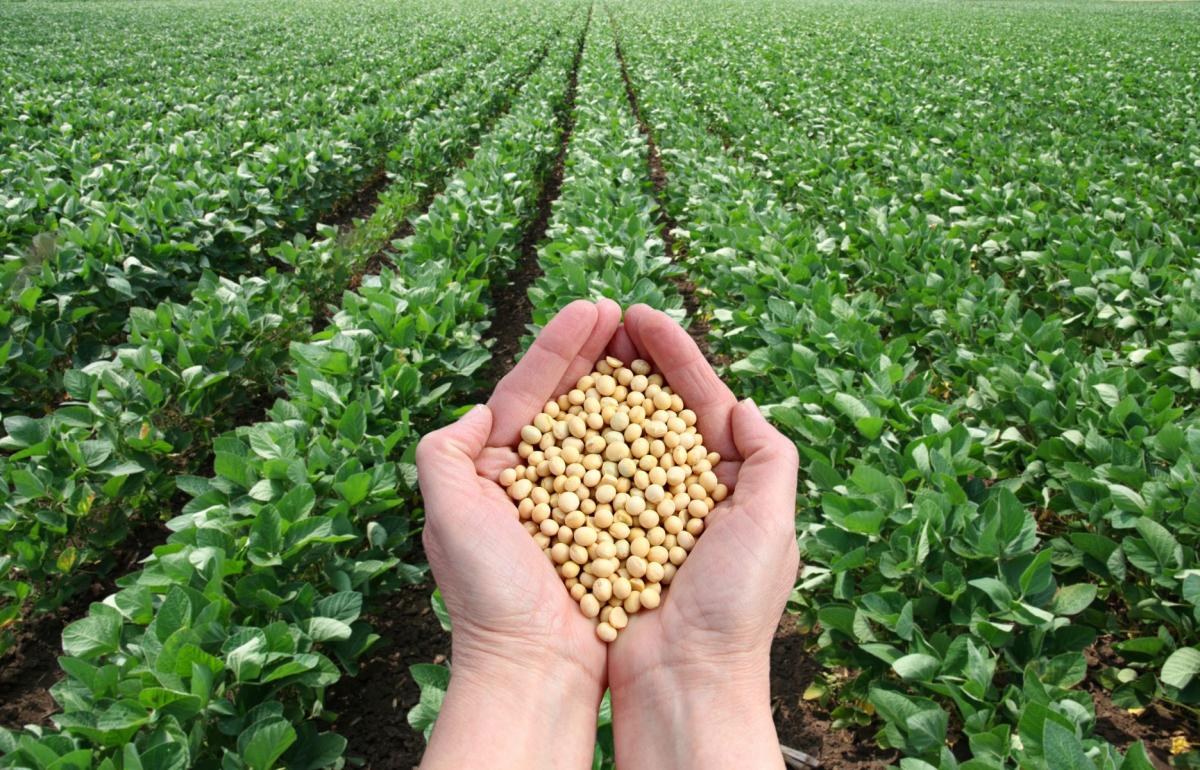History of Soybean Management
Soybean domestication has been traced back to China in the 11th Century B.C. It wasn’t until 1804 that American literature mentioned the word, “soybeans”, however it is thought that soybeans were introduced to the American colonies in 1765 as “Chinese vetches.” The first reference of soybeans being tested in an agricultural school in the United States occurred in an 1879 report from Rutgers Agricultural College in New Jersey. Most of the early soybean production in the United States was as a forage rather than harvested for seed.
| 11TH Century B.C. | Domestication of soybean production in eastern half of North China |
| 1712 | Europeans were aware of soybeans through writing of a German botanist |
| 1740 | Soybean seed may have been sent from China by missionaries and planted in France |
| 1804 | First use of the word, “soybean” in United States literature, although soybeans may have been inducted to the colonies in 1765 and known as “Chinese vetches” |
| 1879 | Rutgers Agricultural College in New Jersey published a soybean testing |
| 1891 | Japanese began to import soybean oil cake for use as fertilizer |
| 1908 | Soybean shipments made to Europe & soybeans attracted worldwide attention |
| 1920’s | Soybean acreage expanded to any great quantity in the U.S. Corn Belt |
| 1924 | Only 1.8 million acres of soybean acreage in the United States, but most of the crop was used for hay. |
| Before WWII | Trade routes in U.S. were interrupted and there was a demand for an edible fat and oil in the United States. Soybeans were a successful new crop because there was an immediate need for soybean oil & meal |
| Following WWII | Soybean production moved from the southern U.S. |
| 1950-70s | The U.S. dominated world soybean production by growing more than 75% of the world soybean crop |
| 1970s | Worldwide shortage of feed protein led to the initiation of large-scale soybean production in several South American countries, notably Argentina and Brazil |
| 2003 | The major soybean producing states of Iowa, Illinois, Minnesota, Indiana, Ohio, Missouri & Nebraska produced 67% of the U.S. production |
| 2003 | The U.S. share of the world’s soybean shrunk to 34% of world soybean production |
| 2014 | The United States contributed to 34% of world soybean production with Brazil, closely following at 30% of world soybean production. |
Soybean acreage increased before World War II as the disruption of trade routes from edible fats and oils occurred. Soybeans became successful as a new crop in the United States since there was an immediate need for soybean oil and meal. In addition, soybeans benefited other crops in a rotation and its culture was similar to corn. Following World War II, soybean production moved from the southern U.S. into the Corn Belt. The U.S. dominated soybean production through the 1950s, '60s and '70s, growing more than 75% of the world soybean crop.

In 2014, almost 4 billion bushels of soybeans were produced in the United States, with an average yield of 47.8 bushels/acre. In 2014, the United States contributed to 34% of world soybean production, with Brazil closely following at 30% of world soybean production.
Top Soybean-Producing States in 2024
- Illinois — 688 million bushels
- Iowa — 597.6 million bushels
- Indiana — 341 million bushels
- Minnesota — 329.4 million bushels
- Nebraska — 301.3 million bushels
QUICK FACTS:
One bushel of soybean weighs approximately 60 pounds.
A 60-pound bushel of soybean yields about 11 pounds of oil and 48 pounds of meal.
DID YOU KNOW?
Soybeans make up about 90% of the U.S. oilseed production, while other oilseeds such as peanuts, sunflower seed, canola and flax make up the remainder.
For more basic soybean growth information, go to the National Soybean Research Laboratory.
Soybean Cultivation
Seed Selection
When purchasing seed, one thing you will notice is that soybeans are sold as varieties while corn is sold as a hybrid. Why is this? The difference is how each of these crops pollinate. Soybeans are generally considered to be self-pollinating, which makes genetic crosses challenging, while corn is cross-pollinated and allows for wide spread production of genetic crosses. Therefore, once soybean breeders have made crosses, further plants will produce seeds with the same genetic makeup, which we refer to as a variety.
One of the most important factors in soybean production is proper seed selection. When looking at the difference between high yielding and low yielding varieties in variety trials, there will often be as much as 15 bushel difference. Consequently, the selection of the proper variety for a field may make a bigger difference in production than any other factor. When selecting varieties, emphasis should be put on proven yield performance from your farm, third party, and seed company data.
Maturity Date
Soybean growth and development is influenced by environmental factors, including photoperiod and temperature. The transition from the vegetative stages to the reproductive stages is predominantly affected by photoperiod. Photoperiod is also known as day length or the period of daylight in every 24 hours. The reaction in a soybean plant that triggers flowering takes place in the dark, so soybean flowering actually relies on the length of darkness during a 24-hour period.
Photoperiod lengths vary throughout the year. The summer solstice, usually around June 21, marks the longest day (shortest night) of the year in the northern hemisphere. During the growing season day lengths increase (nights decrease) up to this date. Day lengths then decrease (nights increase) after this date. Flowering of soybeans is triggered when nights reach a certain length of time, generally occurring when nights start becoming longer. If the dark period is too short or is interrupted by light, the plant will not flower. While many people consider soybeans to be a short-day plant, it is more accurately thought of as a long-night plant.
"Predominantly"
Mainly; for the most part.
"Solstice"
Either of the two times in the year, the summer solstice and the winter solstice, when the sun reaches its highest or lowest point in the sky at noon, marked by the longest and shortest days.
"Hemisphere"
A half of the earth, usually as divided into northern and southern halves by the equator, or into western and eastern halves by an imaginary line passing through the poles.
In between the first day of spring, around March 20, and the first day of fall, around Sept. 23, day lengths increase (nights decrease) as you head north in the northern hemisphere. Throughout the summer, day lengths will be up to at least two hours longer in Canada compared to the southern U.S. Due to this, the lengths of night vary just as much which becomes an issue when triggering soybeans to flower. A soybean adapted to the southern U.S. (shorter days, longer nights) would flower very late in the growing season if grown in Canada (longer days, shorter nights) as nights become long enough to reach the certain length to trigger flowering. A soybean adapted to Canada (longer days, shorter nights) would flower much earlier in the southern U.S. (shorter days, longer nights) as the nights are much longer and would reach the certain length of night much sooner to trigger flowering.
You want soybeans to be as productive as possible by producing lots of leaves and nodes before flowering, but also have enough time to undergo all reproductive stages. To ensure the flowering of soybeans to be initiated at a time that is not too early but not too late, there are different maturity groups of soybeans for different parts of the country. Each group requires certain amount of day length (night length) that will trigger flowering.
Soybean varieties are divided into different maturity groups. These groups are adapted to relatively narrow bands of latitude. The maturity group 000 is best suited for southern Canada, while the maturity group 9 is best suited for the southern tip of Florida (Figure 2). Within each group, it is common practice to add a decimal to denote variation within a maturity group; a common maturity group in Nebraska is 2.8. As you can see from Figure 5, soybean maturities best suited for Nebraska range between the low 2 maturity group to the low 3 maturity group.
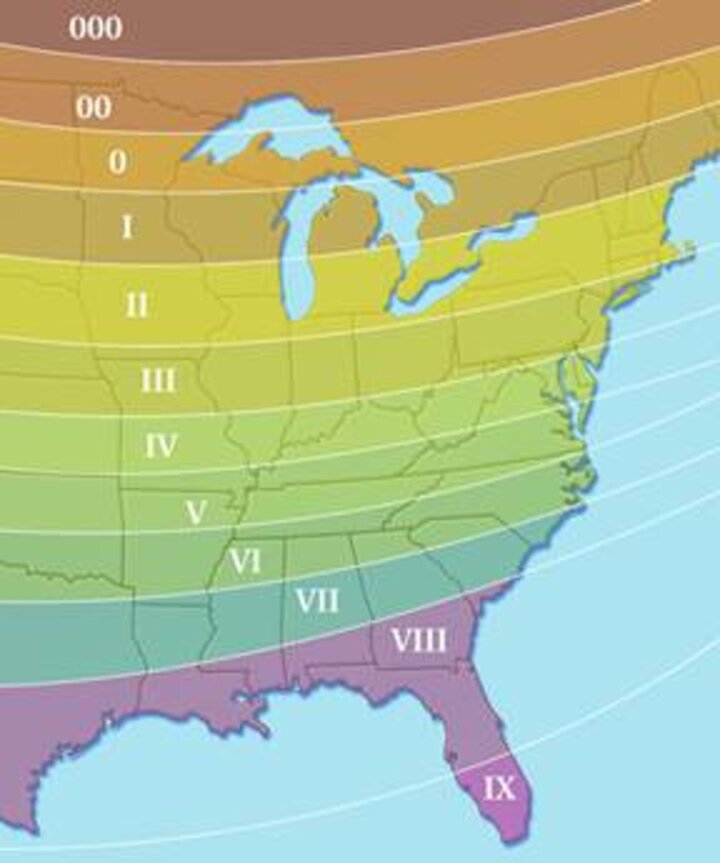
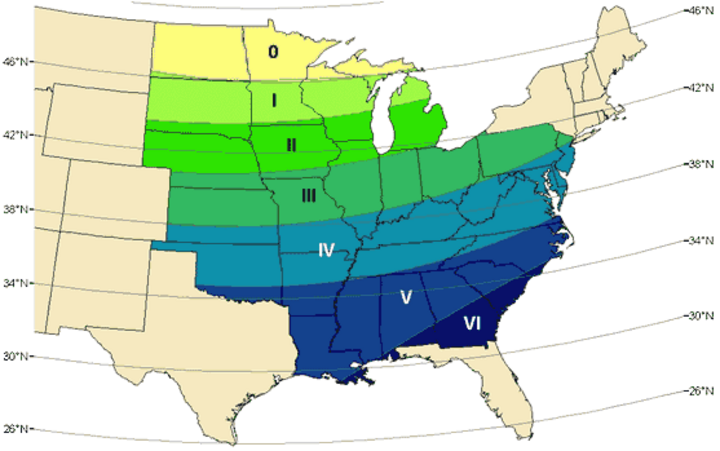
While day length is the most important factor in determining when a soybean plant will flower, temperature also plays an important part. The conversion that takes place in the dark and that triggers flowering happens faster at higher temperatures. Warm nights will result in earlier flowering than compared to cool nights at the same latitude. Soybean plants also need to reach the V3 stage before they are physiologically capable of flowering.
"Physiologically"
Relating to the normal functions of a living thing.
Innoculation
Soybeans are a legume so they typically will not require nitrogen fertilizer. As long as the proper rhizobium bacteria are present, they will infect the roots and form nodules, where nitrogen is fixed by the bacteria. However, if the proper rhizobium is not present, no infection, and consequently, no nitrogen production will take place.
To ensure that rhizobium is present, farmers can treat soybeans with an inoculant containing at least 1,000 viable bacteria per soybean seed. Innoculants come in both dry and liquid formulations. The use of innoculnats depends on the field history of soybean production. If soybeans have never been grown before, a high rate of inoculant is recommended to ensure that proper bacteria are present. When fields have been out of soybean production for five years or more, inoculation would be recommended. However, in a typical corn-soybean rotation, there is typically no need to inoculate the seed as sufficient bacteria will be present to ensure nodulation.
Row Width
In the early 1900s when soybeans were first grown, row spacing was determined by the breadth of the animals used to work the fields. This wide spacing had an impact on methods of weed control and the varieties of soybeans developed. Later on, row spacing was often determined by tractor tire size since cultivation for weed control was required.
However, with the broad spectrum of herbicides available and lodging-resistant soybean varieties available today, soybeans can be grown in many different row spacings, typically ranging from as narrow as 7.5 inch up to as wide as 36 inch rows.
Narrowing soybean row spacing can increase yields if light utilization is the yield-limiting factor. The main purpose of narrow rows is to intercept more light. Unlike fertilizers and water which can use the soil as a reservoir, light falling on bare soil cannot be used. Decreasing row spacing results in more rapid canopy closure and increased light interception. Canopy closure at or shortly after flowering will maximize yields in ideal conditions.
However, Nebraska's growing seasons are rarely ideal. Any yield limiting factor like lodging, weed growth, moisture stress, soil compaction, high soil pH, or nutrient deficiency will reduce soybean yield responses in narrow rows.
Other factors in determining row width are equipment considerations, weed control, variety considerations and erosion considerations. One of the biggest factors in equipment has been the rise in seed costs and the inability of most drills to ensure seed to soil contact and to singulate seed, resulting in a shift toward wider row spacings.
Seeding Rate
When determining soybean seeding rates, farmers need to insure that they are picking a planting population that will maximize yield potential while at the same time minimizing seed cost. Low plant populations have the advantage of resulting in lower seeding costs and allow a farmer to plant more acres without refilling planting equipment. On the other hand, higher seeding populations can result in quicker canopy closure, greater light interception, lower weed competition, and provide insurance against stand loss from factors like crusting, hail, or wet conditions. Adding to the complexity of determining a seeding rate, yield does not always increase as plant population increases. Higher seeding populations also increase competition for nutrients and water, may promote lodging, and add to seed costs.
Luckily for farmers, soybean plants are adaptable when it comes to plant populations. When plant populations are low, individual soybean plants increase their leaf areas, which allows each plant to capture more sunlight, and produce more branches, which allows each plant to produce more pods. This characteristic means that low soybean plant populations can offer competitive yields with higher yields, and may often be more economical when seed costs are included.
Research from Nebraska and surrounding states has found that many producers could save money by lowering their seeding rates from what they are currently planting.
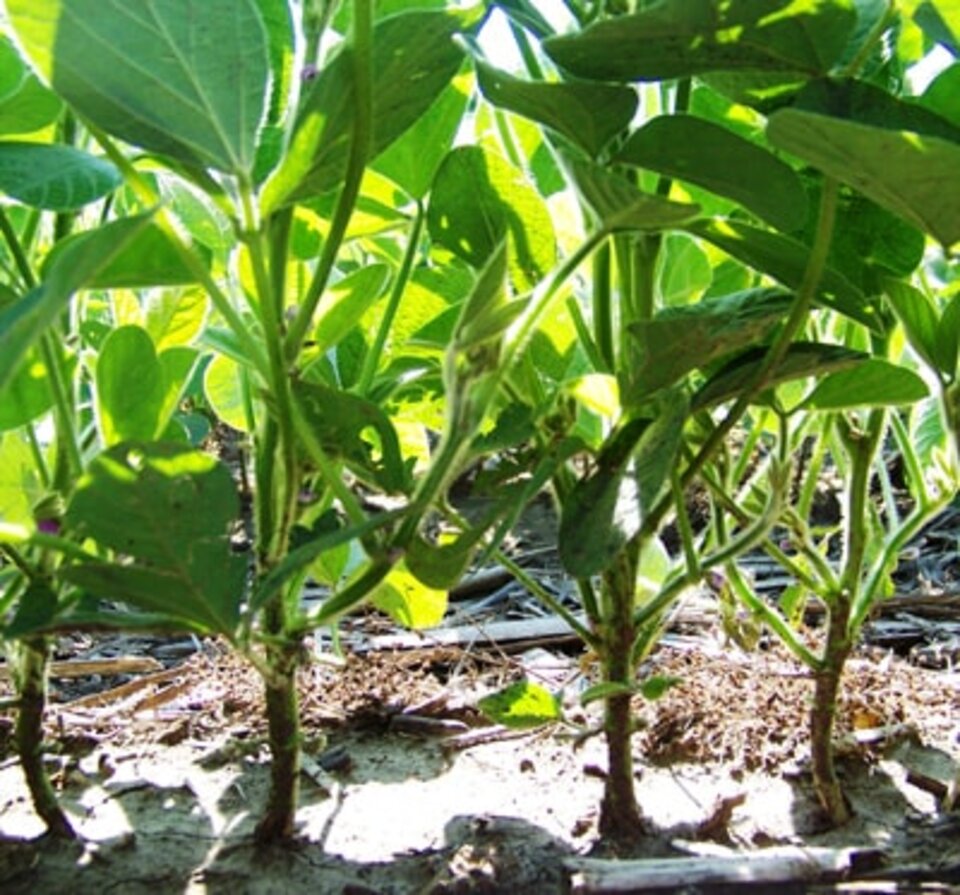
Ask Yourself:
How much does soybean seed cost?
Soybean seed is sold by the unit, with 140,000 seeds in one unit. One unit will typically cost $40 to $60.
Why don’t yields increase with great seeding rates?
As plant populations increase, each plant captures less light, which limits each plant’s growth.
"Branches"
New growth from the main stem with additional leaves and nodes.
"Lodging"
Soybean stems that fall over. Stems can longer support the height or weight of the plant.
Seeding Depth
An important factor in determining soybean seeding depth is the process of germination and emergence. Soybean germination starts when the seed imbibes approximately 50% of the seed weight in water, swelling the seed and starting the process of cell division. This high water requirement makes it important to ensure that seeds are planted into moist soil with good seed to soil contact. Once imbibition has started the first part of the soybean to emerge from the seed is the radicle root, which will quickly have lateral roots and root hairs form. Next, the hypocotyl starts elongating and forms a hook, which pulls the cotyledons out of the ground. During this process of pulling the cotyledons out of the ground the hypocotyl is vulnerable to breaking from soil crusting or field operations. Seeds planted too shallow may be in soil too dry to start the imbibition process or continue to supply enough water for the growing seedling. On the other hand, seeds planted too deep may not have enough energy to pull the cotyledons from the ground.
Soybean planting depth research from UNL from 2011-2013 at four locations showed across all site-years, regardless of early or late planting dates or tillage type, a planting depth of 1.75 inches maximized soybean yields. Shallow depths of less than 1.25 inches with seeding rates of 35,000-105,000 resulted in lower yields, as did deeper planting depths of 2.25 inches or greater at these seeding rates as shown in Figure 4.
This data was from a center-pivot irrigated field near Mead, Nebraska, 30-inch rows planted April 29, 2013 to Pioneer 93M11. Additional graphs cannot be shared at this time as this study has not yet been published in a peer-reviewed scientific journal. In general, all site-years showed optimal yields at the 1.75-inches seeding depth in conventional, no-till, and strip-till fields. Also in general, reduced yields were observed at planting depths shallower than 1.25 inches at seeding rates of 35,000-105,000 and deeper than 2.25 inches at those same populations.
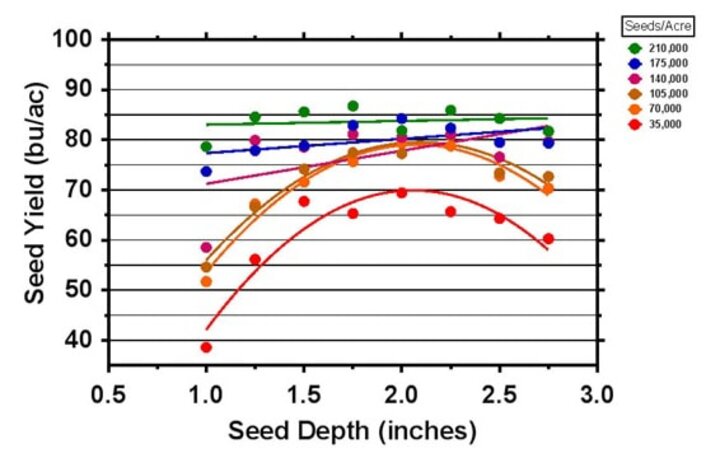
Planting Date
The yield potential of any soybean production system can be enhanced by planting as early as possible. Early planting allows the soybean plant to collects more solar radiation and transpire more available water than if planted later. This will increase the number of soybean nodes per plan and thus yields.
In Nebraska if soil temperatures are warm enough to avoid chilling injury, plant your soybean fields as close to May 1 as possible to provide optimal yields. University of Nebraska–Lincoln research has shown that for every day you plant after May 1, you lose ½ bu/ac yield potential. Delaying soybean planting until May 15 could result in a 7.5 bu/ac yield decrease.
Tillage Practices
Soybeans will grow well in a wide variety of tillage practices, ranging from conventional tillage to no-till.
Tillage is expensive, time consuming, increases soil erosion, and in many cases is not necessary to maximize soybean yield. Yet adoption of no-tillage systems has been slow because the common thought is that soybean growth and yield are reduced in these systems. Cold soils, weed control, increased crop residue, seedbed preparation and more rapid soybean emergence have been cited as reasons to use tillage prior to soybean planting. Each of these points is true; however, each has little to no effect on soybean yield.
Most of the research conducted in the Midwest has shown that soybean in general does not respond to tillage and other management practices should be given more consideration for gaining maximum yield potential. No matter which tillage system is used, ensuring good seed to soil contact at planting is critical to getting a good soybean stand.
Rotation
Soybeans, like most crops, will yield better when grown in a rotation. The most common rotation across the Midwest is a corn-soybean rotation, which has benefits for both crops in breaking up disease and insect cycles, reduces nitrogen use for corn, and increases yields for both crops.
"Rotation"
When a crop is grown in a sequence with other crops instead of being constantly grown.
Irrigation
Overview
The goal of irrigation management is to use water resources to meet crop water requirements in the most profitable way at sustainable production levels.
According to the 2023 Irrigation and Water Management Survey, there were 51.3 million acres of irrigated land in the United States in 2023, which is a decline from 2018, when 55.9 million acres were irrigated. Each year, an estimated total of 81 million acre-feet of water is applied to these acres. An average of 1.5 acre-feet of water was applied on the 212,714 irrigated farms nationwide. California had the highest number of irrigated acres in 2022 at 7.8 million, followed by Nebraska at 7.3 million acres.
Fact:
Less than 1% of farmland is irrigated in the U.S. (2023, USDA NASS).
Fact:
One acre-foot of water is 325,851 gallons, or enough water to cover one acre with 12 inches of water!
The goal of irrigation management is to use water in the most profitable way at sustainable production levels. For production agriculture, this generally means supplementing precipitation with irrigation when crop water demand is high. In recent years, we have seen declines in groundwater levels in Nebraska, almost statewide, and other High Plains states. Considerable areas of Nebraska are considered fully or over-appropriated. This means that in those over-appropriated areas, there will be no new development of irrigated acres. In fully appropriated areas, the water demand and use are relatively in balance and the basin or watershed cannot sustain additional water use development. Additional areas that are not considered fully or over-appropriated have established regulations limiting the expansion of irrigated acres.
See what areas are fully or over-appropriated.
Perhaps the best way to achieve the goal of using water in the most profitable way at sustainable levels is to schedule irrigations with the appropriate amounts of water applied with the appropriate timing. This is accomplished by routinely measuring the soil water status, rainfall, irrigation water applied and estimating crop water use.
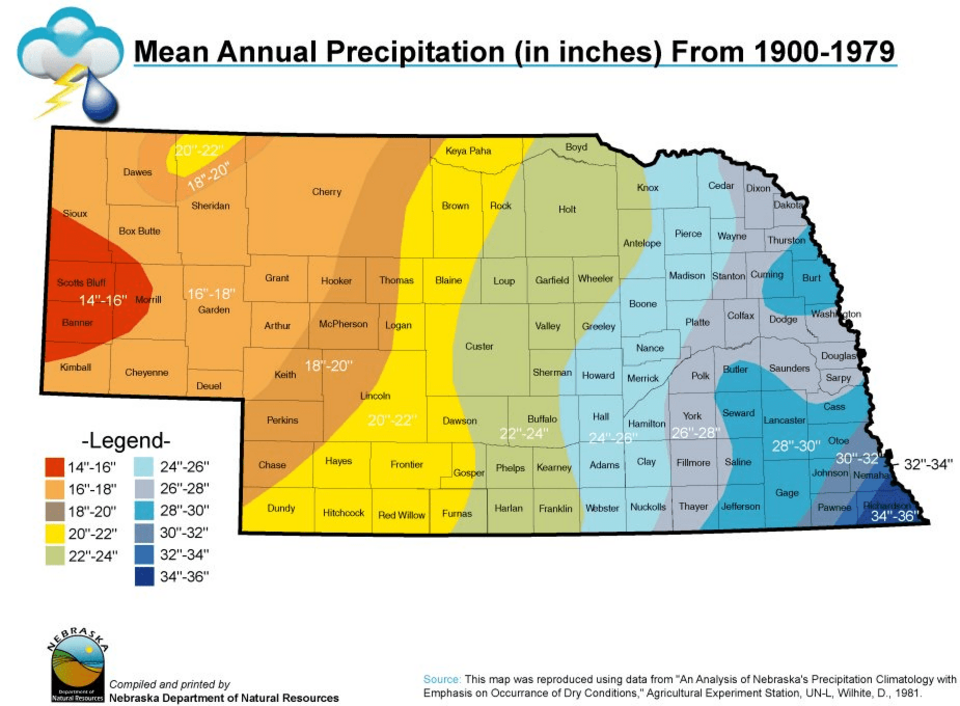
Fact:
There is more variation in precipitation from the southeast corner of Nebraska to the northwest corner than there is from Nebraska to the east coast of the U.S.!
"Soil Water"
Water contained within or flowing through the soil profile. Surface water must infiltrate the soil profile to become soil water. Ground water is subsurface water in sufficient quantity that wells or springs can use it.
Soybean Irrigation Scheduling Methods
The use of irrigation in Nebraska’s soybean production systems has steadily increased in recent years to the extent that irrigated soybean acreage now accounts for about 45% of state’s total soybean acreage. Technological advances in irrigation equipment can improve on-farm water application efficiencies (with respect to savings of both energy and water). However, producer adoption of these advances can be slow due to the capital expenditures required for irrigation system upgrades. Greater producer adoption of more effective crop irrigation management can also ensure that water is scheduled and applied in a “when-needed, just-in-time fashion”, and would thus also optimize the efficiency of on-farm water and energy use.
Irrigation scheduling methods fall into two general categories relative to the information used for making when and how much water should be applied. These include (1) using daily Crop ET estimates as a proxy for daily crop water use, and (2) using soil water sensors placed at various crop root zone depths to quantify daily soil water content. A UNL decision-making tool, SoyWater, takes into account both of these factors.

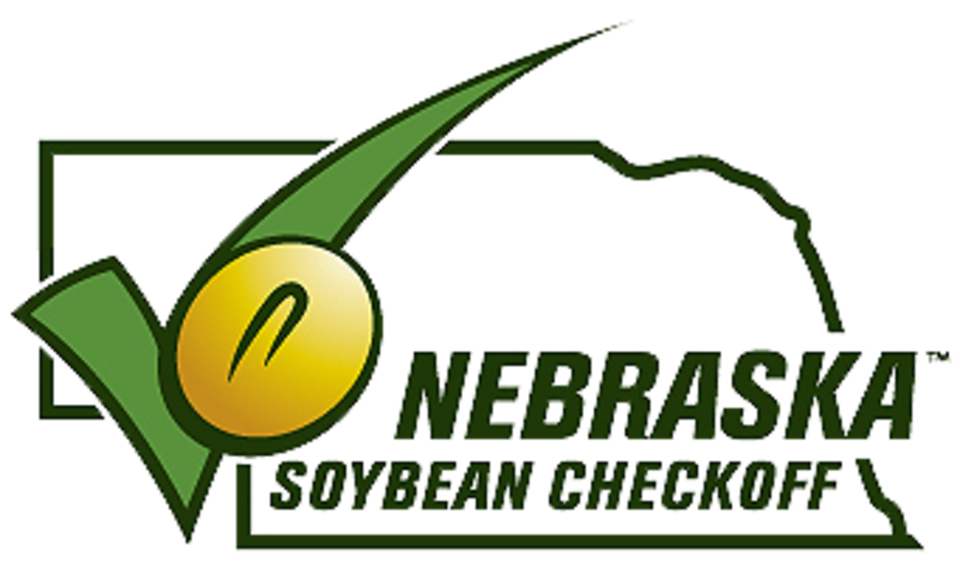
Nebraska Soybean Board graciously provided the funding for the Soybean Management Guide.
Course authored by:
Amy Timmerman, extension educator; Aaron Nygren, extension educator; Brandy VanDeWalle, extension educator; Loren Giesler, Plant Pathologist Department head; Ron Seymour, extension educator; Keith Glewen, former extension educator; Charles Shapiro, emeritus extension soil scientist; Amit Jhala, extension weed specialist; Don Treptow, former graduate student
